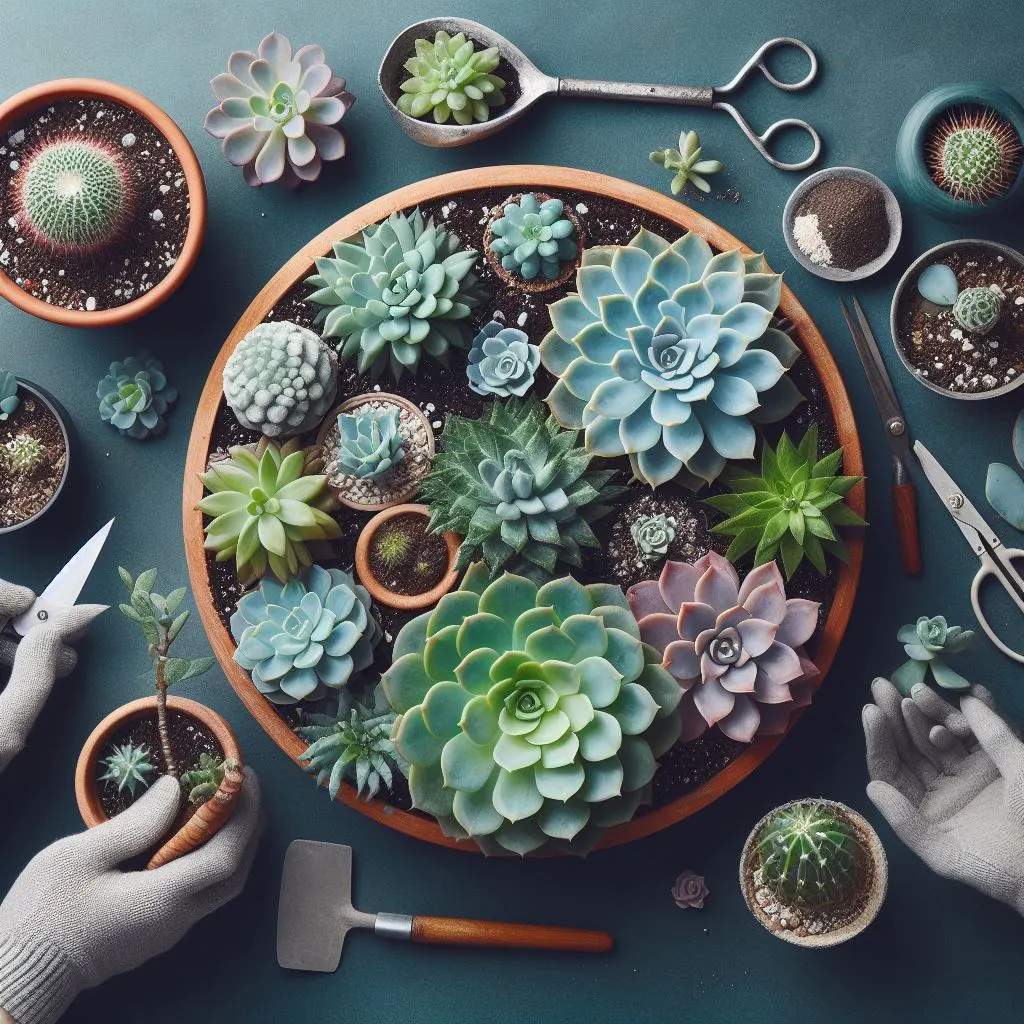Repotting Tropical Succulents: When and How to Do It
Introduction
Repotting tropical succulents is a fundamental aspect of keeping these fascinating plants healthy and thriving. Succulents, known for their ability to store water in their leaves and stems, are popular choices for indoor and outdoor gardens due to their low maintenance needs. However, over time, they may outgrow their pots or deplete the nutrients in the soil, necessitating repotting. In this article, we’ll explore the signs indicating your succulent needs repotting, the steps involved in repotting, and essential tips for caring for your repotted succulent.

Signs Your Succulent Needs Repotting
- Overcrowded roots: As succulents grow, their roots can become overcrowded in their current pots. You might notice roots poking out of drainage holes or circling around the soil surface.
- Slow growth: When a succulent’s growth slows down despite adequate light and water, it may be struggling due to limited space and nutrients in its current pot.
- Water draining too quickly: If you find water running straight through the pot without being absorbed by the soil, it indicates that the soil may have become compacted over time, affecting drainage and root health.
Choosing the Right Pot and Soil
Selecting the right pot and soil is crucial for the well-being of your tropical succulents during repotting. Choose a pot that is slightly larger than the current one, providing room for the plant to grow comfortably but not excessively large, which can retain too much moisture. Opt for a well-draining soil mix specifically designed for succulents, or create your own mix by combining potting soil with perlite, sand, or pumice to improve drainage.
Preparing Your Succulent for Repotting
Before repotting your succulent, take these preparatory steps to ensure a successful transition:
- Watering your succulent: Water your succulent a day or two before repotting. Moist soil makes it easier to remove the plant from its current pot without damaging the roots.
- Loosening the soil: Gently tap the sides of the pot and use a tool to loosen the soil around the edges. This action helps in easing the plant’s removal during repotting.
Repotting Step-by-Step
Follow these steps carefully for a smooth repotting process:
- Removing the succulent from its pot: Tilt the pot sideways and carefully slide the plant out, supporting the base of the plant to avoid breakage.
- Inspecting and trimming roots if needed: Examine the roots for any signs of damage, rot, or overcrowding. Trim away any unhealthy roots using clean scissors or pruning shears.
- Placing the succulent in its new pot: Add a layer of fresh soil to the bottom of the new pot. Position the succulent in the center and fill the sides with more soil, ensuring the roots are covered adequately. Gently press the soil to stabilize the plant.
Caring for Your Repotted Succulent
After repotting, provide proper care to help your succulent adjust and thrive:
- Watering tips: Allow the soil to dry out between waterings to prevent overwatering, which can lead to root rot. Adjust watering frequency based on environmental conditions and the plant’s moisture needs.
- Sunlight requirements: Place your repotted succulent in a location with bright, indirect sunlight. Tropical succulents thrive in well-lit areas but can get sunburned if exposed to intense sunlight for extended periods.
Common Mistakes to Avoid
Understanding and avoiding these common mistakes can contribute significantly to your succulent’s health:
- Overwatering: Succulents are adapted to dry conditions and can rot if overwatered. Develop a watering schedule based on the plant’s specific needs and environmental factors.
- Using the wrong soil: Heavy or moisture-retaining soils can suffocate succulent roots. Use well-draining soil mixes to ensure proper aeration and moisture control for healthy root development.
Conclusion
In conclusion, repotting tropical succulents is a simple yet crucial task for maintaining their health and vitality. By recognizing the signs indicating the need for repotting, selecting the right pot and soil, and following proper repotting and care techniques, you can ensure your succulents continue to thrive and beautify your living spaces. Regular monitoring, appropriate watering, and suitable sunlight exposure will contribute to the long-term success of your repotted succulents, allowing you to enjoy their unique beauty for years to come.